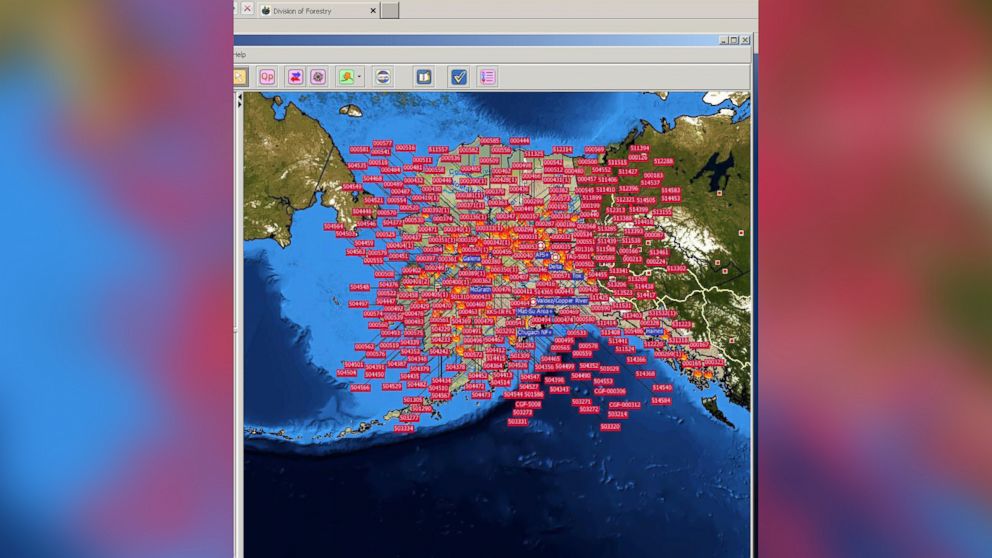Alaska Wildfires Map Puts the 1.8 Million Acres Burned This Year in Perspective
There have been 700-and-counting fires this year, the most in state history.

— -- The number of Alaska's active wildfires is literally off the charts, according to a map recently released by the state's Division of Forestry.
Over 700 fires have burned so far this summer, the most in the state's history, and that number is only expected to get bigger as the state is experiencing higher temperatures, lower humidity and more lightning storms than usual, said Kale Casey, a public information officer for the Alaska Interagency Coordination Center, which serves as a focal point for state agencies involved in wildland fire management and suppression.
"Exactly around 1.88 million acres of land have been burned so far, which is at pace with the 2004 season when 6.59 million acres burned," Casey told ABC News today. "In addition to the dry season we're having, we've had a huge amount of lightning -- about 6,000 to 10,000 bolts per day. There was three-day period in June where we had over 31,000 lightning strikes."
The state's most devastating fire destroyed 55 homes and left 44 other buildings with major damage in Sockeye, Alaska, two weeks ago, Casey said.
The fire not only received attention for its colossal size but also for burning down eight to nine sled dog racers' houses, Casey said.
"The fire in Sockeye affected a community containing the largest concentration of mushers, including some Iditarod muhshers," he said. "That area is like Mecca for sled dog racers."
Though data sets show that fires seem to be the rise in recent years, Casey said this may result from incomplete data in previous decades when it was harder to record fire histories without the technology available today. He added that though Alaska is the busiest region battling fires in the United States this year, it had a lot of moisture last year, making for a very short fire season.
"We've had really dry and really wet seasons in the past," he said. "It just goes to show you never know what you're going to get.





